Naomie Ross
Graphic Designer
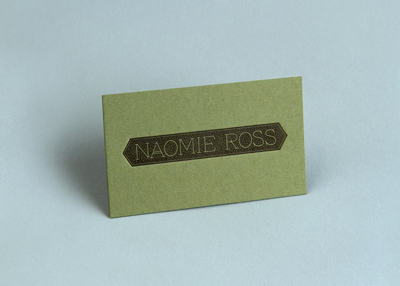
Business card
Primary design concentration:
Branding & Typography
Most preferred tools for designing:
Adobe Illustrator, Wacom tablet
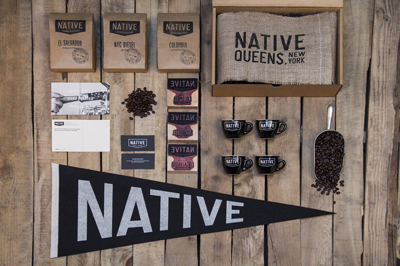
Lettering and identity design for Native Coffee Roasters
How and why did you choose to become a designer?
It has been a pretty long journey. It started when I got my first computer, which happened to be an iMac. The computer came with an old version of Photoshop on it, and I used to play around with it for hours. During my senior year of high school, one of the science teachers there started a Photoshop class, which I eagerly signed up for. After taking that class, I thought maybe I could do that for a living, however, I wasn’t exactly sure what ‘that’ was. I ended up going to the New York City College of Technology (“City Tech”) in Brooklyn for their program called Graphic Arts. This program wasn’t really a design program; most of the classes were focused on teaching the technical aspects of things like learning the programs and setting jobs up for print. During my time at City Tech, I worked at a print shop in Staten Island where I designed club flyers and cards for local businesses.
I ended up leaving City Tech before completing my Bachelor’s degree, because I felt that I was no longer learning anything new and I wasn’t sure what I wanted to do anymore. I continued to work at the print shop for a few more years until I discovered The School of Visual Arts and decided I wanted to go there. Going to SVA really turned me on to design; it made me realize how little I actually knew before.
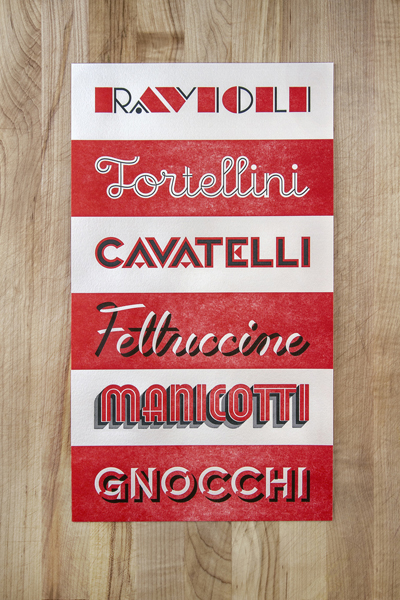
Poster of pasta typography
What are some of the challenges you encounter as a designer and how do you deal with them?
I think the main challenge is coming up with an initial idea. A lot of times, I will spend a few hours looking at design blogs, then I will panic about how I haven’t gotten anything done and just start making marks on the page. Usually sketching things out on paper is a big help, even if it’s a poor sketch, I find that it makes things clearer.
What is your definition of an “elegant solution,” that is, good design?
My definition of an elegant solution is one where there is no extra decoration—where everything has its purpose.
From skills to values, what makes a designer successful?
I think confidence is what makes a designer successful. If you sound sure of yourself and speak about your work in a positive way, I think people will respond to that.
How do you stay motivated and grow personally and professionally as a designer?
By observing design all around. There’s always some design that comes onto the scene that makes me say, “I wish I made that,” and I think that’s what keeps me on my toes.
For those aspiring to become a designer, whatever the discipline, what is your advice?
Study design history, Be humble, Value your work, Go outside often, Travel, Never stop learning.
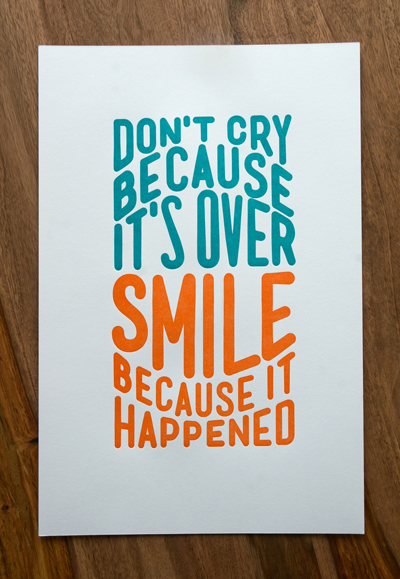
Poster of quote by Dr. Seuss
What is your quest in design, from a professional practice, education or evolution standpoint?
I’d like to have my own studio where I can create designs for things I believe in, while maintaining a good balance between work and life.
Previous: Annaka Olsen | Next: Heather Noddings
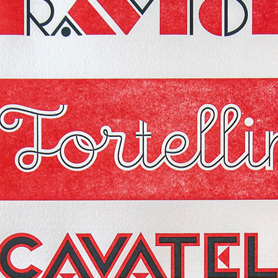
Support this solo initiative
What began as a collection of links has evolved into a comprehensive archive committed to creative culture—offering so far 395 interviews with under-the-radar Artists, Designers & Makers, in addition to 202 write-ups across events, books, movies, more. Free to explore. Free from ads. If you gain a level of motivation, knowledge, even delight, from Design Feast, please support on Patreon. Thanks for your consideration!
Wishing you continual success,
Nate Burgos, Content Creator & Publisher
Comments
There are no comments yet.
Leave Your Comment